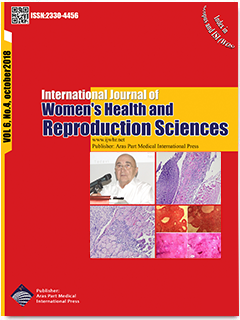| Original Article | |
| Do Squat Exercises With Weight Shift During Pregnancy Improve Postural Control? | |
| Kaname Takeda1, Hiromi Yoshikata2, Masumi Imura3 | |
| 1Division of Physical Therapy, Department of Rehabilitation Sciences, Faculty of Allied Health Sciences, Kansai University of Welfare Sciences, Osaka, Japan 2Yoshikata Obstetrics and Gynecology, 2430 Kozukuecho, Kohoku Ward, Yokohama, Kanagawa 222-0036, Japan 3Japanese Red Cross College of Nursing, Graduate School of Nursing, International Health Care and Midwifery, 4-1-3 Hiroo, Shibuya-ku, Tokyo 150-0012, Japan |
|
|
IJWHR 2019; 7: 010-016 DOI: 10.15296/ijwhr.2019.02 Viewed : 3211 times Downloaded : 3192 times. Keywords : Pregnant women, Postural control, Squat |
|
| Full Text(PDF) | Related Articles | |
| Abstract | |
Objectives: The present study aimed to investigate the effect of squat exercises with weight shift on muscle strength and postural control during pregnancy. Materials and Methods: The squat group comprised 21 pregnant women in their 20s and 30s with no exercise habits while the control group consisted of 20 randomly selected pregnant women in their 20s and 30s with no exercise habits. The squat group was instructed to perform two sets of daily squat exercises with weight shift in the anterior, posterior, right, and left directions, with 10 repetitions counted as one set, for 10 weeks. The stabilometer was used to measure postural control ability in the second and third trimesters. Meanwhile, muscular strength was taken as the toe grip force and quadriceps muscle strength before and after the intervention. Results: In the squat group, significant increases were observed in the index of postural stability and the stability area. Conversely, however, significant decreases were detected in the average rectangular area. In addition, in the intervention group, significant declines were observed in the rectangular area in the posterior, right, and left directions. However, a considerable increase in muscular strength was only seen after the intervention in toe grip force. Conclusions:Based on the results, it was concluded that everyday squat exercises which were performed during pregnancy improved postural control. The improvement of postural control during squat movements was thought to have a greater impact on plantar sensation than on muscle strength. These findings suggest that squat exercises with weight shift may promote fall prevention. |
Cite By, Google Scholar
Online Submission System
 IJWHR ENDNOTE ® Style
IJWHR ENDNOTE ® Style
 Tutorials
Tutorials
 Publication Charge
Women's Reproductive Health Research Center
About Journal
Publication Charge
Women's Reproductive Health Research Center
About Journal
Aras Part Medical International Press Editor-in-Chief
Arash Khaki
Mertihan Kurdoglu Deputy Editor
Zafer Akan























